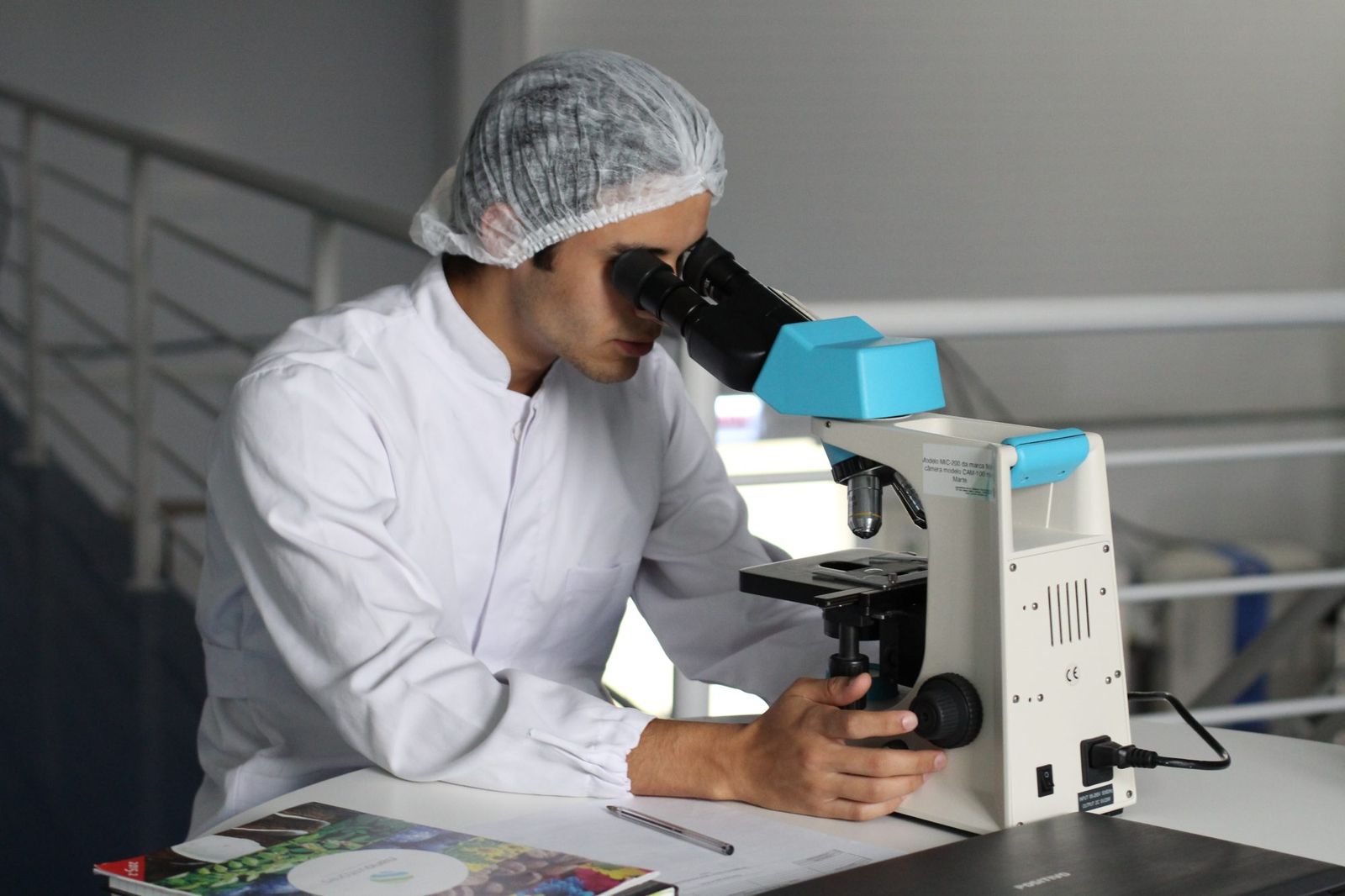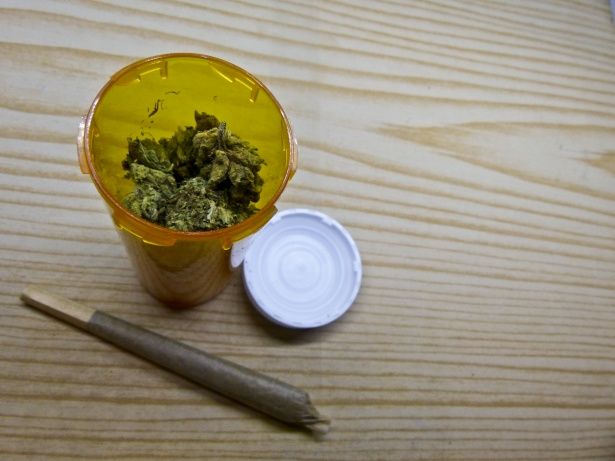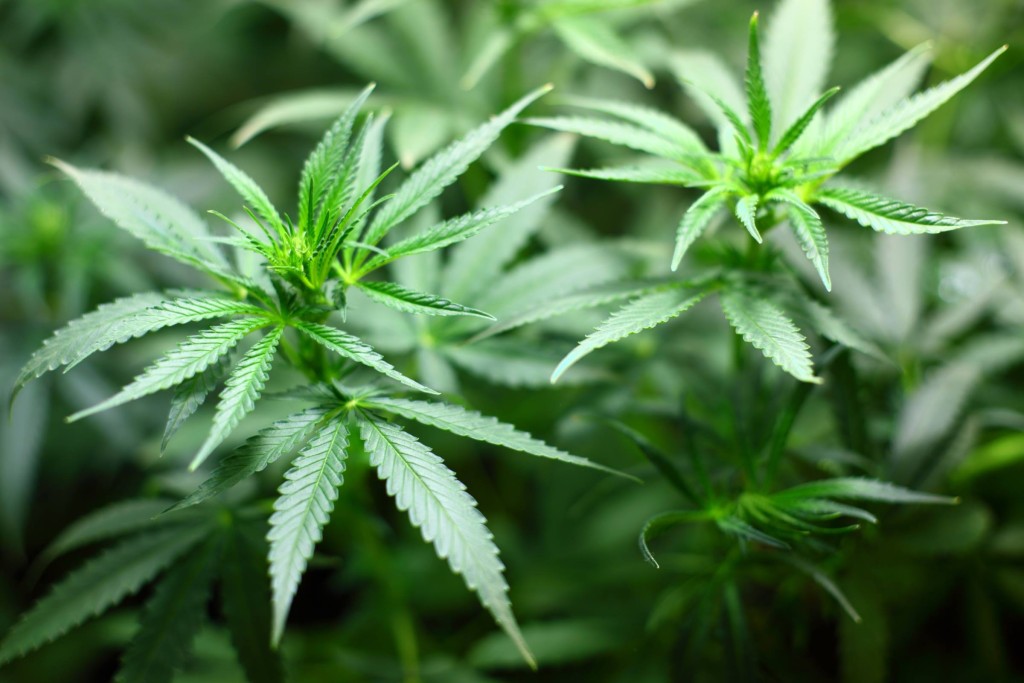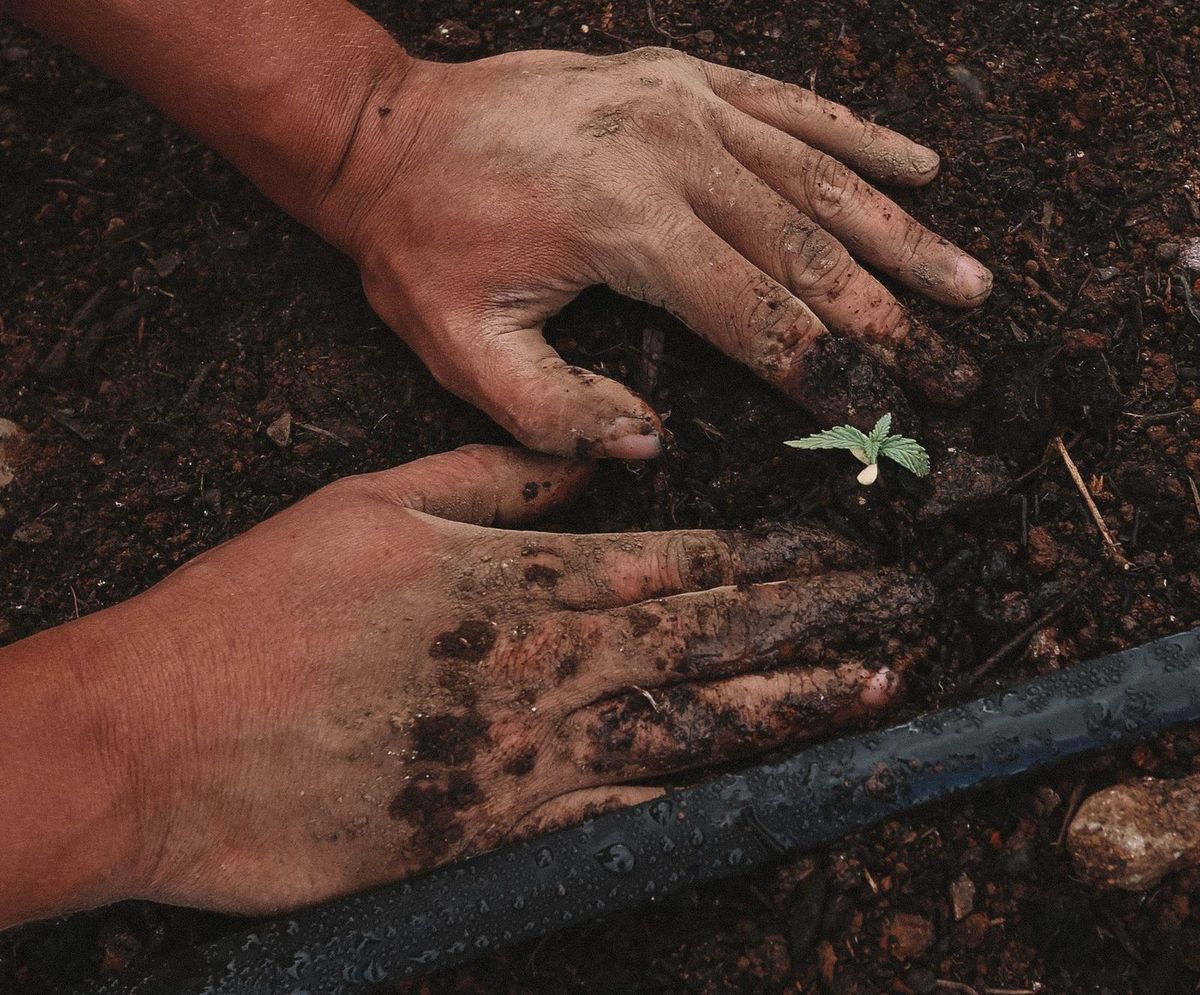Get the 101 on Cannabis Analysis, and Some Best Practices Leading up To It
When it comes to the cannabis industry, quality management is of utmost importance. From the moment a cannabis seed is planted to the final product on the shelves, every step of the process must be carefully managed to ensure the highest level of quality and safety. This is where cannabis analysis comes into play. By analyzing the plant and its products, industry professionals can identify potential issues and implement the best cannabis quality assurance practices.
Understanding how cannabis analysis is conducted and the best practices involved is crucial for ensuring that consumers are receiving safe and effective products. By analyzing cannabis samples, industry experts can determine the potency of cannabinoids, such as THC and CBD, as well as identify any potential contaminants. This information is crucial for producing consistent products that meet regulatory standards and, most importantly, safeguard consumer health. Let’s delve deeper into the world of cannabis analysis and explore the best practices that ensure the highest level of quality throughout the entire cannabis production process.
What is Cannabis Analysis?
Cannabis analysis is a crucial process that ensures the quality and safety of cannabis products. It involves testing various components of cannabis to determine its potency and purity. One of the main reasons for conducting cannabis analysis is to measure the levels of specific compounds that have a significant impact on the plant’s properties and effects.
For producers, cannabis analysis ensures product quality by identifying contaminants, maintaining consistency in cannabinoid profiles, aiding strain development, and enabling regulatory compliance. Accurate analysis also supports transparent product labeling, informs research and development efforts, and contributes to competitive innovation.
On the other hand, regulators rely on cannabis analysis to safeguard consumer safety by testing for contaminants and pesticides. It facilitates standardization of product quality, aids in compliance monitoring, assists law enforcement in distinguishing legal products, builds public trust in the industry, and provides data for informed policy decisions. Now, let’s take a look at some of the compounds that are analyzed during the cannabis analysis process.

Δ9-Tetrahydrocannabinol
One of the most well-known compounds in cannabis is Δ9-tetrahydrocannabinol (THC), which is responsible for the plant’s psychoactive effects. THC is also the compound that differentiates cannabis from hemp. The difference between the two is that hemp is bred to contain very low levels of THC, and is used for industrial purposes. On the contrary, cannabis is bred to have high levels of THC, which can range from a few percent to over 30% in some potent strains. By analyzing the levels of THC, we can determine whether a particular cannabis sample is within the legal limit and whether it is suitable for medical or recreational use.
Cannabidiol (CBD)
Another important compound that is extensively analyzed is cannabidiol (CBD). CBD is known for its therapeutic properties and has gained popularity in recent years for its potential health benefits. By measuring the levels of CBD, we can determine the medicinal value of a particular cannabis strain and ensure that it meets the requirements of consumers who are seeking CBD-rich products.
Other Compounds
In addition to THC and CBD, cannabis analysis also focuses on other compounds such as Δ8-tetrahydrocannabinol, Cannabigerol (CBG), THC Acid (THCA), Cannabidiolic Acid, Cannabichromene (CBC), and cannabinol (CBN). These compounds have their own unique properties and play a significant role in the overall effects of cannabis. Analyzing these compounds allows us to understand the full spectrum of cannabinoids present in a particular strain and tailor the product’s effects to meet consumers’ needs.
THC Acid (THCA)
THC Acid (THCA) is the precursor to THC and is often analyzed to determine the potency of cannabis. It undergoes decarboxylation, a process in which heat is applied to convert THCA into THC. By measuring the levels of THCA, we can estimate the potential potency of a cannabis sample and determine its suitability for specific purposes.
Cannabidiolic Acid (CBDA)
Cannabidiolic Acid (CBDA) is another compound that is frequently analyzed. Like THCA, CBDA is the precursor to CBD and undergoes decarboxylation to convert into CBD. Analyzing the levels of CBDA allows us to gauge the potential CBD content in a cannabis sample and ensure that it meets the desired standards.
Cannabichromene (CBC) and cannabinol (CBN)
Cannabichromene (CBC) and cannabinol (CBN) are also important compounds that are carefully analyzed during cannabis analysis. CBC has been found to have potential therapeutic effects, while CBN is known for its sedative properties. By measuring the levels of CBC and CBN, we can determine the potential benefits and effects a particular cannabis strain may offer.
What is the Difference in Medicinal and Recreational Cannabis?
A key component of the cannabis analysis process is to determine whether cannabis is suited for medicinal, or recreational purposes. How is that determined? Read on to learn about it!
Let’s begin with medicinal cannabis. This type of cannabis is cultivated with a focus on therapeutic properties and is primarily used to alleviate symptoms of various medical conditions. Medicinal cannabis typically contains higher levels of CBD (cannabidiol), which is a non-psychoactive compound known for its potential therapeutic effects. CBD has shown promise in reducing pain, inflammation, anxiety, and even seizures.
On the other hand, recreational cannabis is cultivated for its psychoactive effects. The primary compound responsible for this is THC (tetrahydrocannabinol). THC is the cannabinoid that gives cannabis its famous “high.” Unlike medicinal cannabis, recreational varieties have higher levels of THC and lower levels of CBD.
It’s important to note that the categorization of cannabis as medicinal or recreational is not solely determined by CBD and THC content. Other factors, such as the presence of other cannabinoids, terpenes, and the legal and regulatory framework of a specific jurisdiction, also play a role in how cannabis products are categorized and marketed.

How Does Cannabis Analysis Determine Medicinal or Recreational Usage
The analysis begins with testing the plant material for various compounds, including cannabinoids, terpenes, and contaminants. These tests are carried out by specialized laboratories that employ advanced technologies and follow standardized protocols. By analyzing the chemical composition of the plant material, cannabis experts can determine the levels of CBD and THC, among other compounds.
Cannabis analysis also helps in ensuring that the plants are free from harmful contaminants such as pesticides, heavy metals, and microbial pathogens. These tests are crucial to guaranteeing the safety of the end product, especially for medicinal cannabis users who may have compromised immune systems.
To achieve the best results, it’s important to follow best practices in cannabis analysis. This includes properly sampling the plant material, utilizing validated testing methods, and ensuring the accuracy and reliability of the laboratory performing the analysis.
Additionally, maintaining transparency throughout the entire process is paramount. Cannabis producers should provide detailed information about the analysis results to their customers, whether they are medical patients seeking relief or recreational users looking for a specific experience. This transparency helps consumers make informed decisions and further promotes the overall credibility of the cannabis industry.
Related Reading
- Cannabis Harvesting Equipment
- Harvesting Cannabis
- Best Cannabis Quality Assurance Practice
- Marijuana Shelf Life
- Cannabis Storage
- Cannabis Cultivation
- How To Become A Grower For A Dispensary
What are the Steps Involved in Cannabis Analysis?
Cannabis analysis involves a series of steps that help determine the potency and safety of cannabis products. These steps typically include:
| Step | Description |
|---|---|
| 1. Sample Collection | The first step in the analysis process is to collect samples of the cannabis product. These samples can include flowers, concentrates, edibles, or any other form of cannabis. It is important to collect a representative sample that accurately reflects the overall product. |
| 2. Pre-Processing | Once the samples are collected, they are prepared for analysis. This can include grinding the flowers or homogenizing the concentrates to ensure consistent results. |
| 3. Potency Testing | The next step is to determine the potency of the cannabis product. This involves measuring the levels of cannabinoids, such as THC and CBD, in the sample. Potency testing is important for both medical and recreational cannabis products, as it helps consumers understand the effects they can expect. |
| 4. Pesticide Testing | Another crucial aspect of cannabis analysis is pesticide testing. This step helps determine if the cannabis product is contaminated with harmful pesticides or other chemicals. Pesticide testing is essential for consumer safety and ensures that products meet regulatory standards. |
| 5. Microbial Testing | Microbial testing is performed to check for the presence of bacteria, yeast, and mold in the cannabis product. This is especially important for medical cannabis, as patients with weakened immune systems are more susceptible to infections. Microbial testing helps ensure that the product is safe for consumption. |
| 6. Residual Solvent Testing | For cannabis concentrates, residual solvent testing is essential. This step involves checking for the presence of solvents, such as butane or ethanol, that may have been used during the extraction process. Residual solvent testing helps ensure that the concentrate is free from harmful substances. |
| 7. Heavy Metal Testing | Cannabis plants have a unique ability to absorb heavy metals from the soil. As a result, it is important to test for the presence of heavy metals, such as lead, cadmium, and mercury, in the cannabis product. Heavy metal testing is crucial for consumer safety and compliance with regulatory standards. |
Related Reading
- Cannabis Potency Testing
- Cannabis Genetics
- Humidity For Cannabis
- Best Microbes For Weed
- Curing Cannabis
- Cannabis Data Analytics
- Cannabis Extraction
- Cannabis Cultivation Techniques
- Pest Control For Cannabis
- Trichome Harvest Chart
- Cannabis Solvents
- Drying Cannabis
- Growing Cannabis In A Greenhouse
- Cannabis Testing Methods
- Contaminated Marijuana
- Environmental Control Grow Room
- How To Know When To Harvest Cannabis
- Best Fertilizer For Marijuana
How Software Helps with Traceability for the Cannabis Analysis Process
When it comes to the cannabis industry, there is a growing demand for transparency and quality control. Consumers want to know exactly what they are putting into their bodies, and producers want to ensure that their products are safe and effective. This is where seed-to-sale cannabis software comes into play, providing an essential tool for traceability throughout the entire cannabis analysis process.
At its core, seed-to-sale cannabis software allows producers to track their plants from the moment they are seeds all the way to the final product. This includes monitoring the growth and development of the plants, documenting the use of any pesticides or fertilizers, and tracking the harvesting and processing of the cannabis. With this software, every aspect of the production process is meticulously recorded, providing a comprehensive view of each plant’s journey.

Did you know? GrowerIQ has an industry-leading Seed-to-Sale Cannabis Software (with quality management built in) that is designed to uncomplicate cannabis production for cannabis producers throughout the world.
What are the Methods of Cannabis Analysis?
When it comes to cannabis potency analysis, two analytical techniques take center stage: Gas Chromatography (GC) and High-Performance Liquid Chromatography (HPLC). These techniques play a crucial role in ensuring the quality and accuracy of cannabis products, providing valuable information about their chemical composition. Let’s take a closer look at the merits of each technique and how they differ from one another.
Gas Chromatography (GC) for Cannabis Analysis
Gas Chromatography (GC) is a widely used technique in the cannabis industry. It works by vaporizing the sample and separating its components based on their volatility. The vaporized components then pass through a column and are detected by a detector. This technique is highly effective in analyzing the volatile compounds found in cannabis, such as terpenes and residual solvents.
One of the main advantages of GC is its ability to provide detailed information about the individual compounds present in a cannabis sample. This information is crucial for understanding the unique characteristics and effects of different strains. Additionally, GC provides accurate and reliable results, making it a trusted method for potency testing.

High-Performance Liquid Chromatography (HPLC) for Cannabis Analysis
On the other hand, High-Performance Liquid Chromatography (HPLC) is another commonly used technique in the cannabis industry. Unlike GC, HPLC analyzes the sample in a liquid phase, making it ideal for testing non-volatile compounds, such as cannabinoids. This technique separates the sample components based on their affinity for the stationary phase and their solubility in the mobile phase.
HPLC offers several advantages over GC. Firstly, it allows for the analysis of a broader range of compounds, including cannabinoids, which play a significant role in determining the potency of cannabis products. Secondly, HPLC requires less sample preparation, making it a more time-efficient technique. Lastly, HPLC is known for its high sensitivity and accuracy, ensuring reliable results.
Differences Between The Two Analysis Techniques
While both techniques have their merits, it’s important to note that they have some key differences. GC is better suited for analyzing volatile compounds, while HPLC is more effective in analyzing non-volatile compounds. Additionally, GC requires the sample to be in a gaseous state, while HPLC analyzes the sample in its liquid phase. These differences make each technique suitable for different aspects of cannabis analysis.
What is the Role of Mass Spectrometry in Cannabis Analysis?
One crucial tool in the cannabis industry’s quality management arsenal is mass spectrometry. Mass spectrometry plays a primary and central role in cannabis analysis. It is not just a supplementary technique but a fundamental method used for the comprehensive and accurate characterization of cannabis products.
So, what exactly is mass spectrometry? In simple terms, it is a powerful analytical technique used to identify and quantify the chemical components of a substance.
Use Cases for Mass Spectrometry in Cannabis Analysis
There are various use cases for mass spectrometry in the cannabis industry. One significant application is potency testing, which determines the concentration of cannabinoids like THC and CBD. This information is vital for both producers and consumers, as it allows for accurate dosing and labeling of cannabis products. Additionally, mass spectrometry can identify and quantify other important compounds such as terpenes, which contribute to the aroma and therapeutic effects of cannabis.
Another critical use case for mass spectrometry is the detection of contaminants. Cannabis plants are known to absorb and accumulate various substances from the environment, including pesticides, heavy metals, and microbial contaminants. Mass spectrometry can detect and quantify these contaminants, ensuring that cannabis products are safe for consumption.
Mass spectrometry can be used to analyze the chemical composition of cannabis extracts and concentrates. This information is crucial for product development and quality control, as it allows producers to monitor the consistency and integrity of their products.
In addition to its analytical capabilities, mass spectrometry offers several advantages for the cannabis industry. It is a highly sensitive technique, capable of detecting and quantifying compounds at trace levels. This sensitivity is essential when dealing with complex matrices like cannabis, where compounds of interest may be present in low concentrations.
Mass spectrometry is also known for its specificity, meaning it can differentiate between different compounds with similar structures. This is particularly relevant in the cannabis industry, where the identification of specific cannabinoids and terpenes is crucial for understanding the plant’s nuances and potential therapeutic effects.
Related Reading
- Cannabis Labeling Requirements
- Indoor Cultivation Design
- Cannabis Compliance Software
- Quality Control Cannabis
Best Practices Leading Up To Cannabis Analysis
By implementing best practices throughout the cultivation process, you can streamline the analysis process and ensure that your cannabis products meet the highest standards. Let’s dive in to some of the best practices to ensure your cannabis analysis process goes as smoothly as possible!
1. Start with Quality Seeds
The first step towards producing high-quality cannabis is to start with quality seeds. Choose reputable seed banks and suppliers that provide genetically stable and reliable seeds. This will set the foundation for a successful cultivation process and yield better cannabis for analysis.

2. Optimize Growing Conditions
Creating the ideal growing conditions for your cannabis plants is essential. This includes providing the right amount of light, temperature, humidity, and air circulation. By optimizing these factors, you can promote healthy plant growth and minimize the risk of pests or diseases. Healthy plants are more likely to produce cannabis that meets the desired quality standards.
3. Maintain Proper Nutrient Levels
Providing your cannabis plants with the right nutrients is crucial for their development. Conduct regular soil and water testing to ensure that the nutrient levels are appropriate for optimal plant growth. This will not only enhance the quality of your cannabis but also simplify the analysis process by reducing the risk of nutrient imbalances.
4. Monitor Watering and Irrigation
Overwatering or underwatering your cannabis plants can negatively impact their growth and overall quality. Establish a watering schedule and ensure that your plants receive adequate moisture without causing waterlogged soil. Proper irrigation practices will help you maintain healthy plants and consistent cannabis quality.
5. Implement Integrated Pest Management
Pests and diseases can wreak havoc on your cannabis plants and compromise their quality. Implementing an integrated pest management (IPM) system is essential to prevent infestations and reduce the need for chemical pesticides. Regularly monitor your plants for signs of pests or diseases and take immediate action to mitigate any issues. Healthy, pest-free plants will contribute to a smoother analysis process.
6. Harvest at the Right Time
Timing is everything when it comes to harvesting cannabis. Harvesting too early or too late can have a significant impact on the quality of your final product. Monitor the trichomes on your plants to determine the optimal harvest time. Harvesting at the right moment will ensure the maximum potential of cannabinoids and terpenes, resulting in higher-quality cannabis for analysis.
7. Proper Drying and Curing
After harvesting, proper drying and curing techniques will further enhance the quality of your cannabis. Provide a well-ventilated and controlled environment to dry your plants slowly. Once dried, cure the buds in a controlled environment to enhance their aroma, flavor, and overall potency. Properly dried and cured cannabis will yield more accurate and consistent analysis results.
How Seed to Sale Cannabis Software Makes Cannabis Analysis More Efficient
From the moment the seeds are planted to the final sale, every step must be carefully managed to ensure the highest quality cannabis possible. This is where seed-to-sale cannabis software comes into play. By utilizing this powerful tool at all phases of the cultivation process, cannabis analysis becomes more efficient, ultimately leading to a superior product.
Seed-to-sale cannabis software allows for the seamless integration and tracking of data throughout the entire cultivation process. From the moment the seeds are planted, every detail is captured and recorded, including nutrient levels, lighting conditions, and growth patterns. This enables growers to closely monitor and analyze the progression of each plant, identifying any potential issues or areas for improvement. By having all of this data readily available, cultivators can make more informed decisions, such as adjusting nutrient levels or altering lighting schedules, to optimize plant health and yield..
Discover how GrowerIQ’s seed-to-sale software can help you set up all of the components of a successful cannabis production operation without any hassle. Questions we haven’t covered? Please reach out and let us know. GrowerIQ serves clients coast to coast, and we’re ready to help your team today.
Streamline Cannabis CultivationRecommended For You
Revolutionizing Efficiency: How Production Management Software Transforms Creative Industries into Powerhouses
January 2, 2026Unlock the Secret to Thriving Greenery: Discover the Best Organic Fertilizer for Seedlings Today!
December 30, 2025Cannabis Conventions: Where Innovation Meets Culture in the Heart of the Green Revolution
December 29, 2025About GrowerIQ
GrowerIQ is changing the way producers use software - transforming a regulatory requirement into a robust platform to learn, analyze, and improve performance.
To find out more about GrowerIQ and how we can help, fill out the form to the right, start a chat, or contact us.

